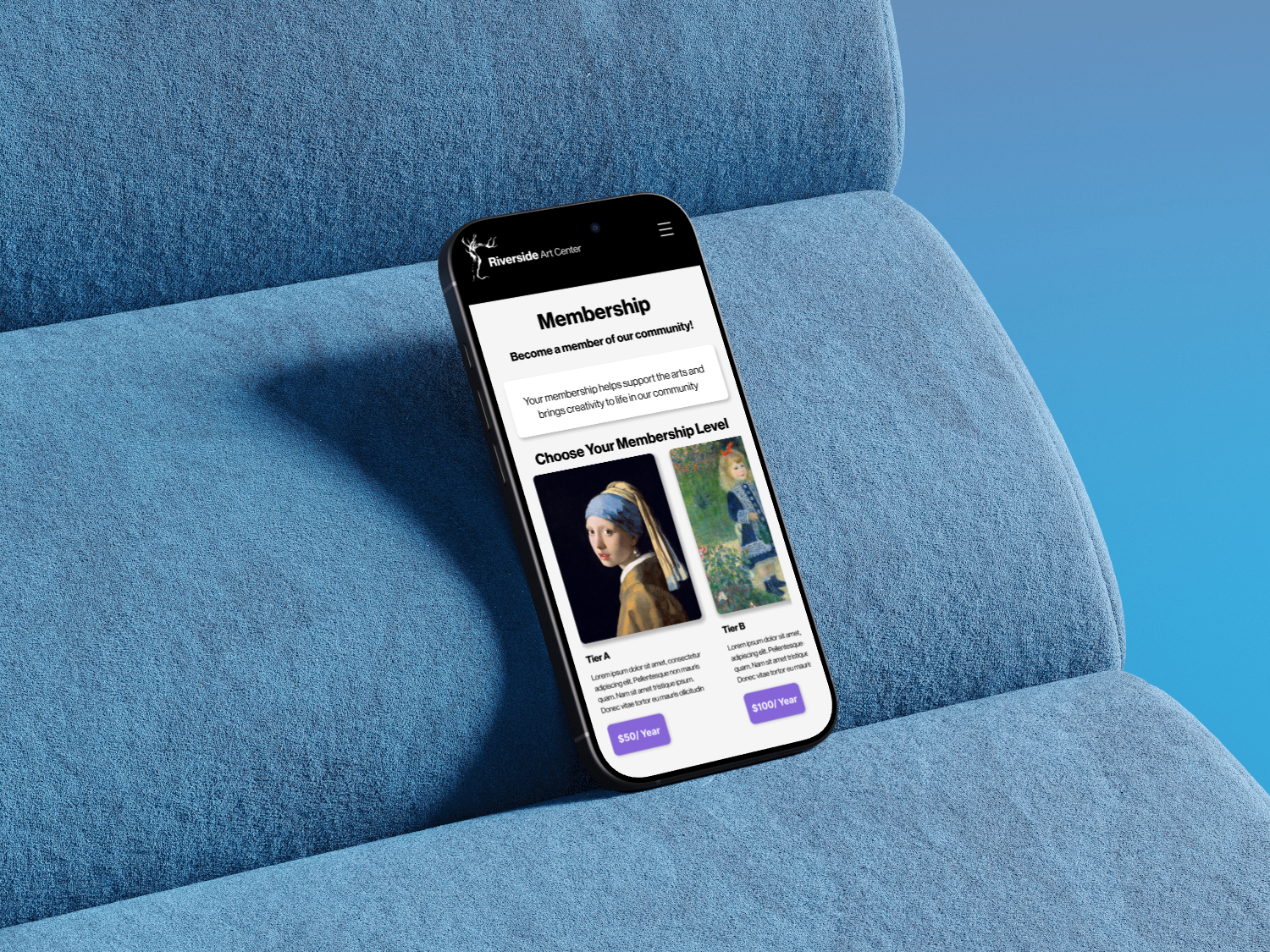Engineered for precision, designed for simplicity

A responsive redesign for PouchMark Automation
I led the redesign of PouchMark's website to align with their refreshed brand identity. The focus was on making complex industrial equipment easier to understand through improved readability, card-based layouts, and a high-contrast design that works better for accessibility.
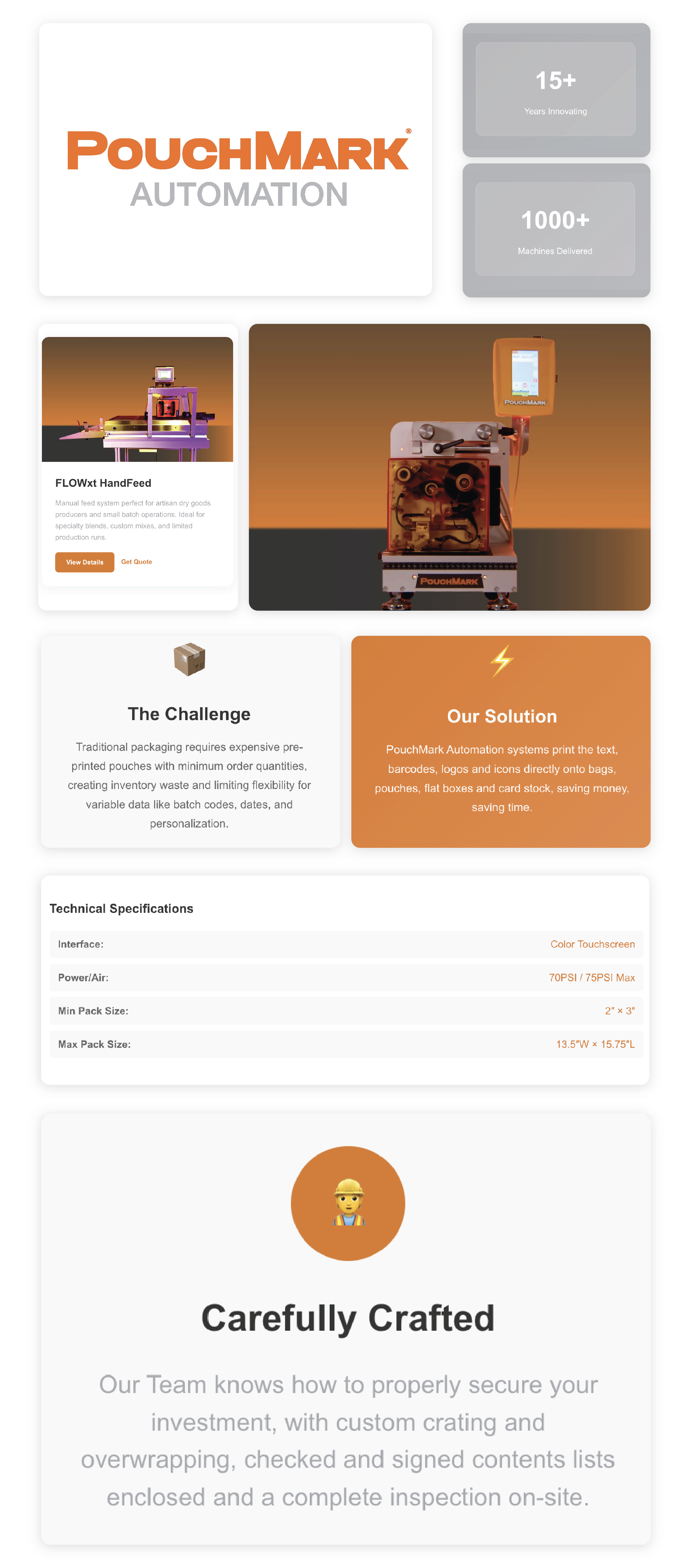
I talked with sales teams, packaging engineers, and procurement managers to understand how people actually make decisions when buying this kind of equipment. One thing became clear pretty quickly: technical buyers need to validate specs fast before they'll invest time going deeper. That insight shaped everything, we put the critical technical info upfront while keeping clear paths to more detail and contact options.
I built the interface for instant clarity using clean card hierarchy, strong contrast, and predictable spacing so users can move quickly and confidently. The layout reduces cognitive effort during navigation and scrolling. The end goal is for the user to be interested in a system and want to fill out the contact form, therefore every branch of the structure has an endpoint at contact.

The design system is built on a tight typography scale, high contrast, and structured spacing. Color and elevation reinforce hierarchy and give tactile feedback. The goal was to create something that feels reliable and easy to navigate, a system you can learn once and apply everywhere.

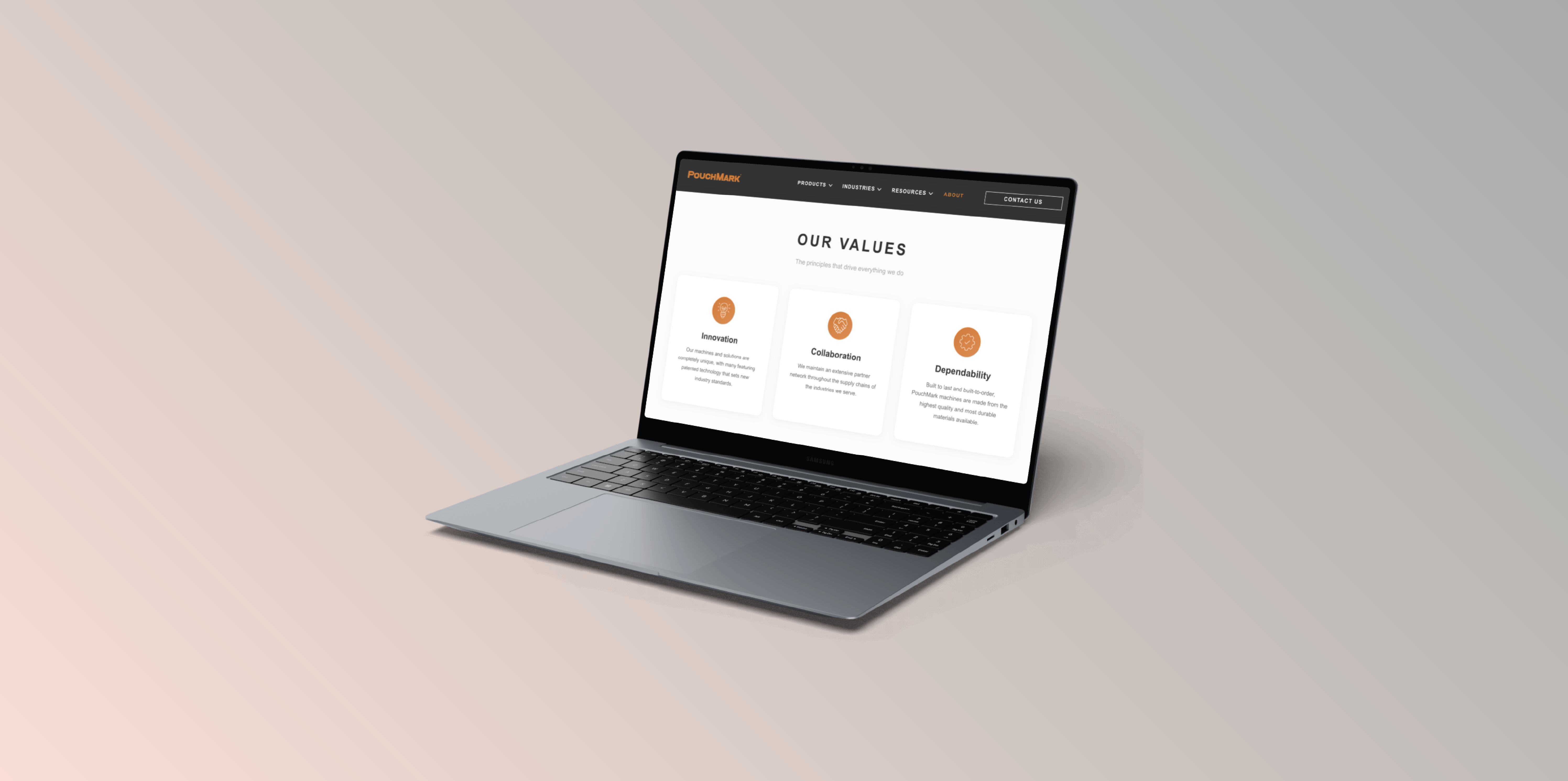
The site needed to present cutting-edge automation without overwhelming people. I used clean layouts, readable type, and subtle motion cues to tell a clear story about complex equipment. It's meant to feel expert but approachable, the kind of interface that builds trust through simplicity rather than trying to impress with complexity.
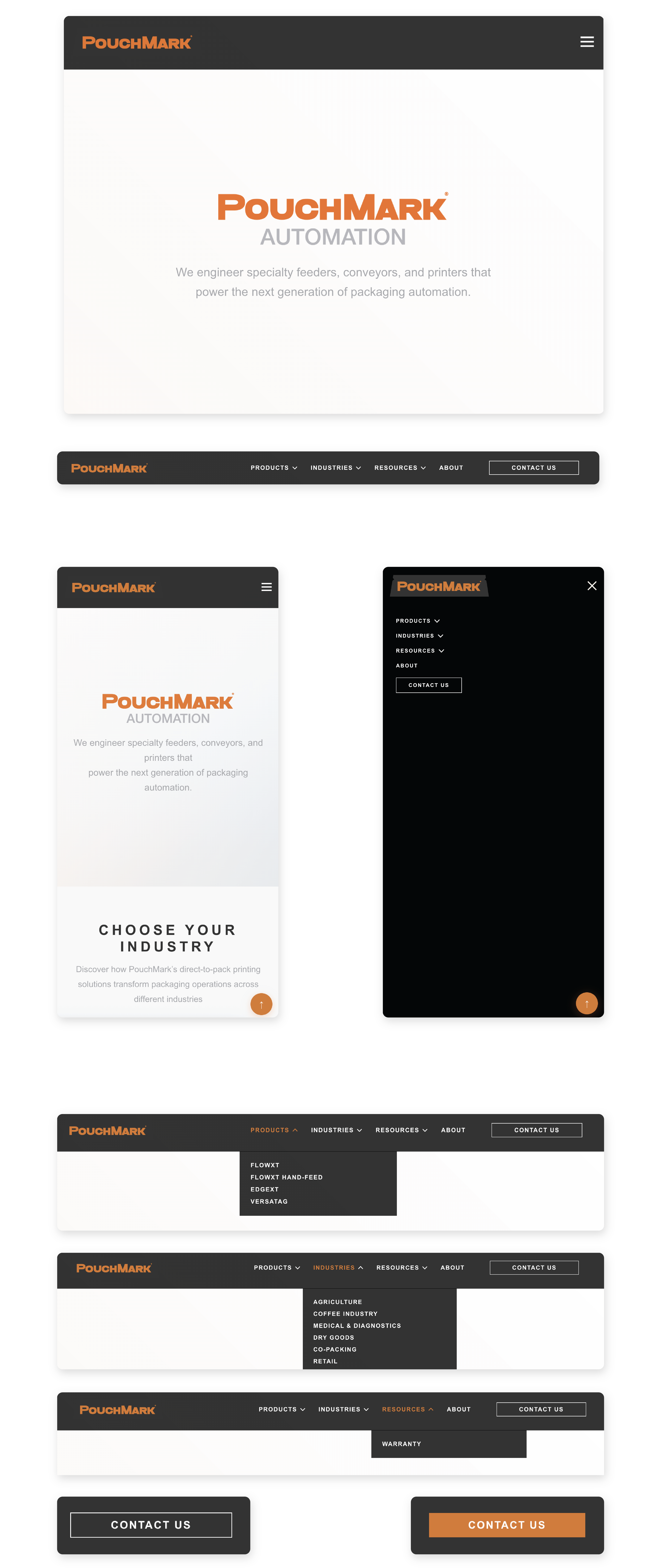
Rather than organizing products by technical specs alone, I structured the architecture around customer workflows and decision paths. Each product page surfaces the information buyers told me they need first, capacity, speed, footprint, then progressively reveals more technical depth. This lets different stakeholders (engineers vs. procurement vs. executives) get what they need without wading through irrelevant details.
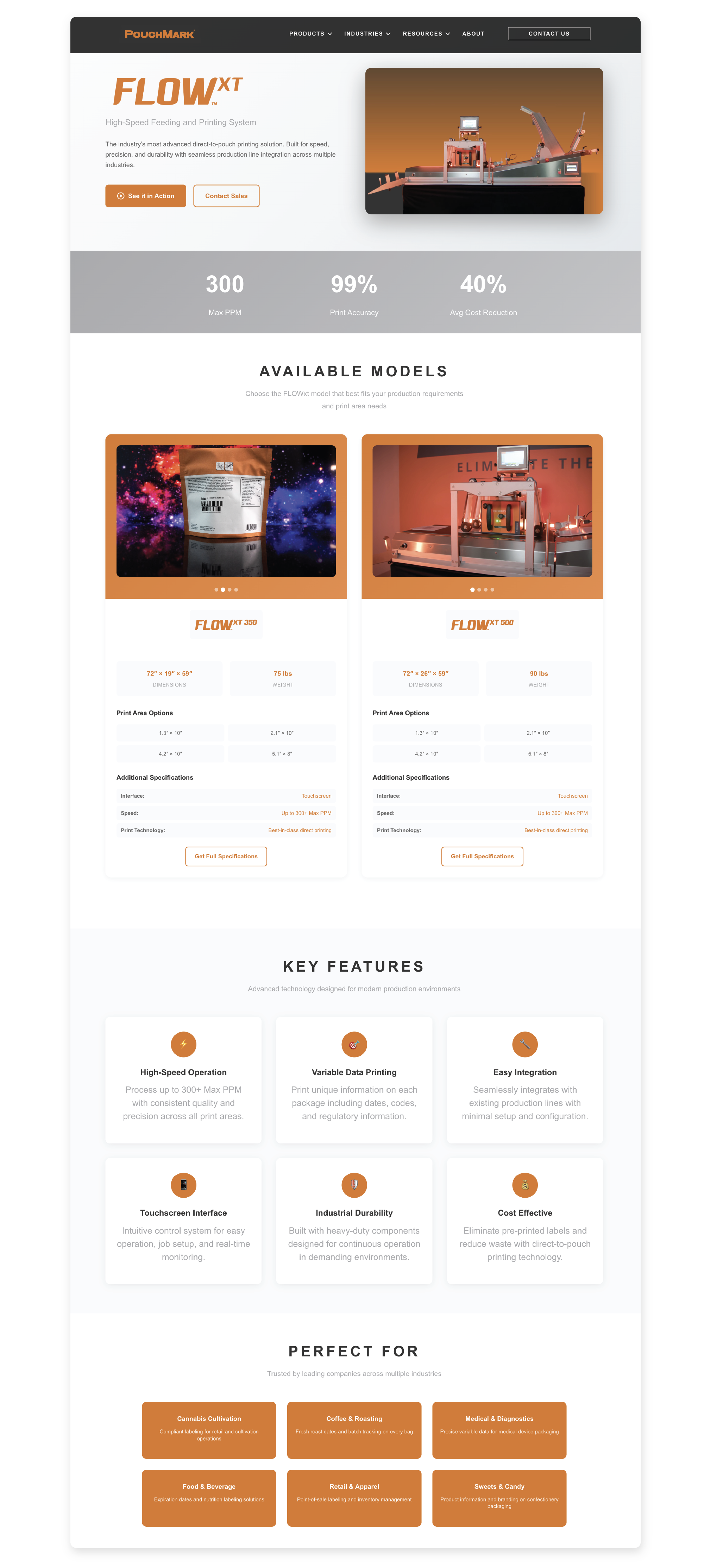
Each product page emphasizes clarity, technical confidence, and conversion readiness. High-fidelity system photography, equipment breakdowns, key capabilities, and direct CTAs help users quickly understand machine value. Structural spacing, bold system headlines, and integrated request-quote buttons support high-intent decision-makers like plant managers and operations directors.
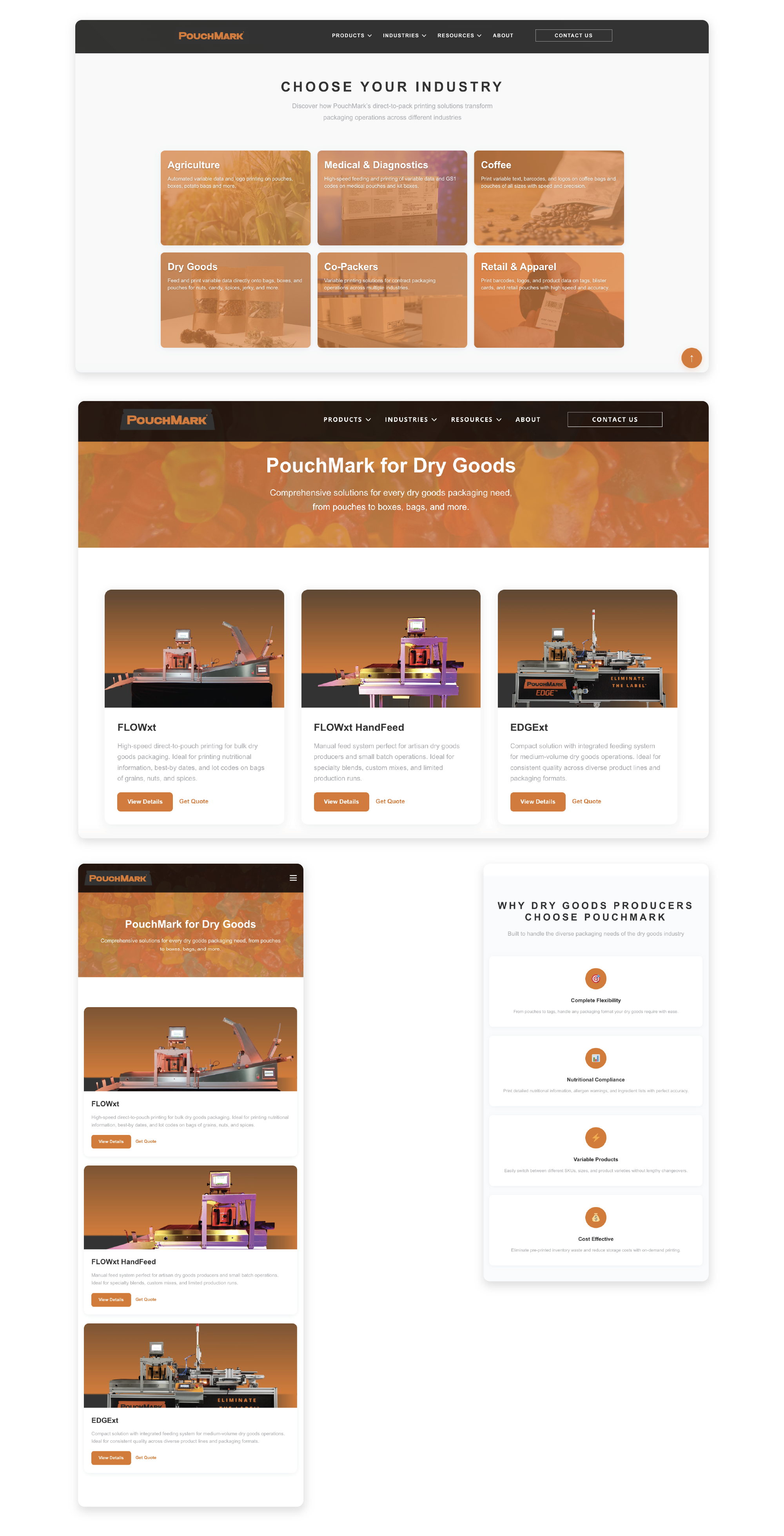
The PouchMark website was redesigned to introduce cutting-edge industrial automation through a clean visual language that feels modern, reliable, and approachable. The goal was to simplify complex technical equipment into a clear, trust-driven story with high readability, structured hierarchy, and subtle motion cues. The interface combines industrial precision with friendly accessibility, offering a brand that feels expert, but never overwhelming.
Rather than organizing products by technical specs alone, I structured the architecture around customer workflows and decision paths. Each product page surfaces the information buyers told me they need first, capacity, speed, footprint, then progressively reveals more technical depth. This lets different stakeholders (engineers vs. procurement vs. executives) get what they need without wading through irrelevant details.
Hover States & Interactions
Every interactive element gives clear feedback without being distracting. Hover states use subtle elevation and color shifts to show what's clickable. I kept transitions under 200ms so everything feels immediate. The interactions are there to build confidence and reinforce the navigation logic, not to show off.

